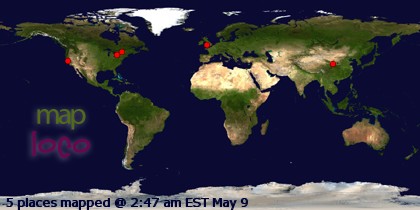I think possibly some of this has been caused by the rather grounding effect that Ishido Sensei has on people. I spent nearly one and a half weeks with him, training at different dojo and of course absorbing nearly everything that he has said to nearly everyone during this time. If nothing else, my Japanese has improved.
I have found that the majority of his advice to me has been about getting the basics right (surprise) and it has, as I have said, been quite a grounding experience.
I have for the last couple of weeks found myself standing in the dojo unsure what to actually practice. This hasn't been overall a difficult period; it has caused me to view what others are doing and try and appraise my own iaido through comparison with others. I sincerely think this is a good thing. It has caused a bit of a hiatus in the physical side of my training and last night's practice made me realise how quickly leg muscle tone can say bye-bye.
Just after my last blog I also spent a weekend in Poland teaching koryu. I found this to be quite an enlightening experience as well - there's nothing like forcing yourself to do things correctly when showing them to other people.
Anyway, down to the technical side of things, I will try to summarise all the things that Ishido Sensei has instructed me in the last couple of weeks, some of which are "new"ish, some I knew but just had started to fail to do them properly, some I was doing okay with them....
- Preparation in mae and shohatto is much more critical than it seems. The gathering of the grip, the realignment of the tsukagashira, the closing of the knees...these all need to be deeply embedded before the sword is drawn and much before the hips are raised.
- The correct level of the sword and the arm in nukitsuke is far lower than is normally presented. One should clearly be able to see the upper flat of the sword.
- Sayabiki needs to not only clear the sword out but also add to the cut in nukitsuke.
- 99% of people don't do the prescribed furikaburi in mae and ushiro.
- The build up to the cut in kirioroshi must be sharp - not hard, or fast but sharp.
- Kirioroshi is generated by a gripping action of the hands.
- The front foot must take position first both in nukitsuke and kiritsuke - this closing but not overlapping of the gap has been a major challenge for years for me.
- The right hand position after ochiburi is of course the same for yokochiburi and the forward sword angle is about the same as well - no need for the kissaki to aim inside so much.
- Noto needs to project the sword out to 45 degrees - no more, no less (this makes it considerably easier).
- One shouldn't load the weight onto the bending knee when lowering the body during noto.
- Ukenagashi - don't get me started!
- Okay then, the deflection must occur as part of the body rising (hane-ageru).
- People's sword position is often correct, it is the body position which is often wrong. It should be the same as kesagiri but about 15 degrees to the left of the centreline.
- Tsukaate opponents are REALLY close and the rear thrust can allow the right hand to go past the left elbow.
- Morotezuki - hikinuki is performed with only a slight pulling caused by the turning of the hips - after that the lifting of the sword is more or less the same as ukenashi ni kaburu.
- This kaburi is meant to represent the most efficient way of moving the sword and should keep the sword as close to the centreline as possible.
- At the end of each cut in Sogiri, there must be a feeling of seme rather than just setting up a rhythm.
- The cuts need to have a sense of urgency.
- Ukigumo needs the same intensity of practice to get right as Ukenagashi (10 of these to every other kata).
Anyway, I think that's enough for now. I will try to get back into the habit of doing this blog but other duties are always calling....






